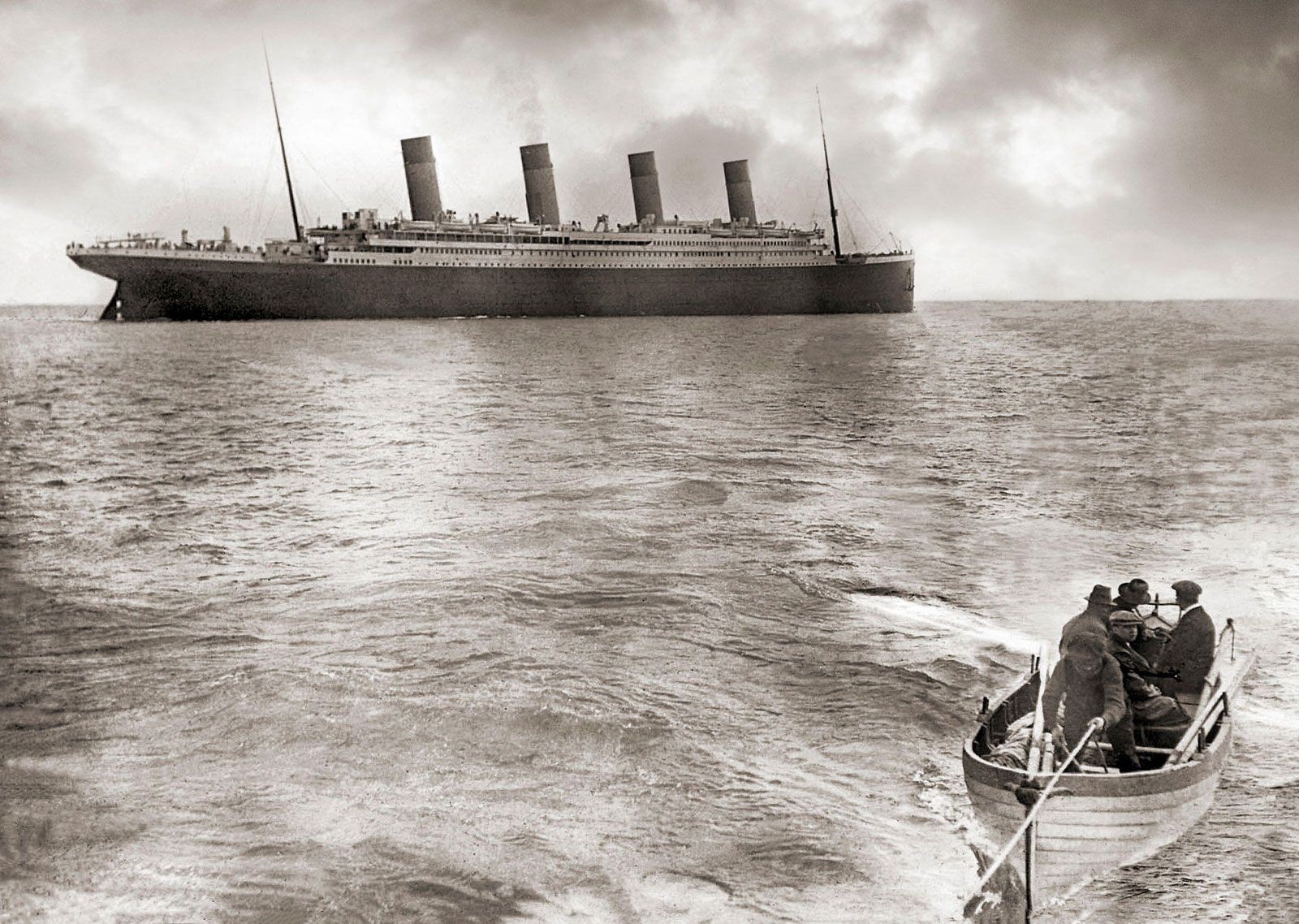 Alt text: The Titanic leaving Queenstown, Ireland, April 11, 1912, one of the last known photographs of the liner before it sank.
Alt text: The Titanic leaving Queenstown, Ireland, April 11, 1912, one of the last known photographs of the liner before it sank.
The sinking of the RMS Titanic in April 1912 remains one of history’s most infamous maritime disasters. The “unsinkable” ship, on its maiden voyage from Southampton to New York City, tragically met its demise after striking an iceberg in the North Atlantic. But why did the Titanic sink, given its advanced design and touted safety features? This article will delve into the factors that contributed to the disaster, exploring the chain of events that led to the loss of over 1,500 lives.
A Combination of Factors
The Titanic disaster wasn’t caused by a single fatal flaw but rather a confluence of circumstances. While the iceberg collision was the direct cause, several contributing factors played crucial roles:
High Speed in Icy Waters
The Titanic was traveling at a high speed of 22 knots (approximately 25 mph) in known icy waters. While not uncommon for the time, this speed significantly reduced the crew’s reaction time after the iceberg was sighted. A slower speed would have provided more time to maneuver and potentially avoid the collision altogether. Captain Smith’s decision to maintain high speed, likely driven by a desire to arrive in New York on schedule and impress passengers, proved disastrous.
Limited Visibility and Lack of Binoculars
The night of the disaster was unusually calm, resulting in a flat sea surface that made it harder for lookouts to detect icebergs. The absence of binoculars in the crow’s nest further hampered their ability to spot potential hazards in the darkness. This limited visibility drastically shortened the time between sighting the iceberg and the collision, leaving insufficient time for effective evasive action.
Insufficient Lifeboats
Although the Titanic carried more lifeboats than required by regulations at the time, the number was woefully inadequate for the total number of passengers and crew onboard. This meant that hundreds were left with no means of escape when the ship sank. Further exacerbating the issue, many lifeboats were launched partially filled due to a lack of proper training and drills for the crew.
Communication Breakdown
A series of missed and mishandled communications contributed to the tragedy. Iceberg warnings from other ships were either not relayed to the bridge or not treated with sufficient urgency. The nearby Californian, which could have potentially assisted, had its wireless operator off duty. These communication failures hindered the Titanic’s ability to prepare for and respond effectively to the impending danger.
The Fatal Collision and its Aftermath
The Titanic’s collision with the iceberg resulted in significant damage below the waterline, flooding several compartments. The ship’s design, though considered advanced, was not able to withstand this level of damage. As water poured in, the Titanic began to list and eventually broke apart, sinking to the bottom of the Atlantic.
The Carpathia arrived on the scene hours later, rescuing the 705 survivors who had managed to escape in lifeboats. The disaster shocked the world and led to significant changes in maritime safety regulations, including requirements for sufficient lifeboats for all passengers and 24/7 radio operation on passenger ships.
Conclusion: A Cautionary Tale
The sinking of the Titanic serves as a sobering reminder of the importance of safety precautions, effective communication, and prudent decision-making, even with the most advanced technology. While the iceberg was the immediate cause, the disaster was ultimately the result of a series of human errors and systemic failures that could have been avoided. The Titanic’s tragic fate continues to resonate today, prompting ongoing research and analysis to ensure such a catastrophic event never happens again.